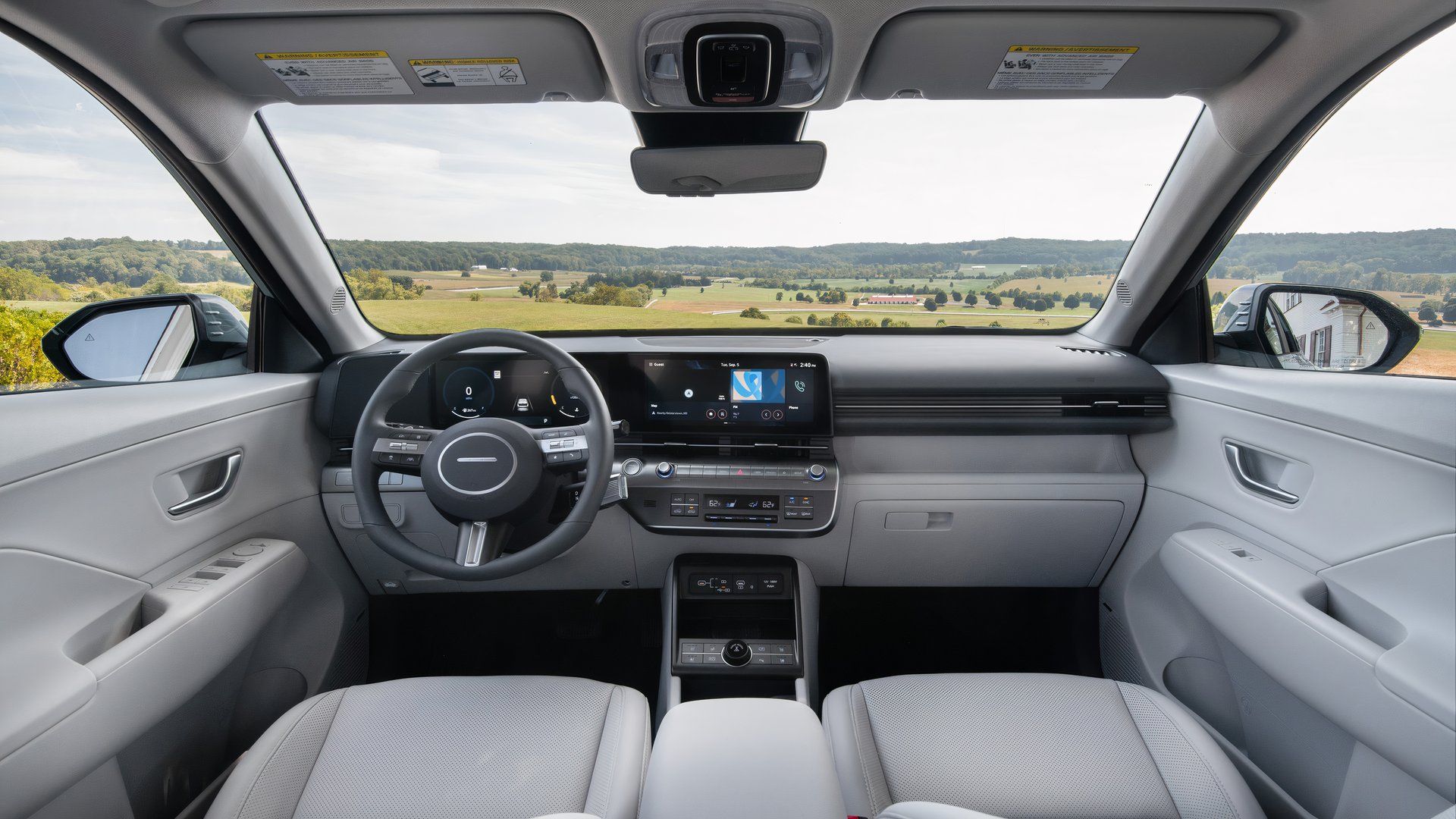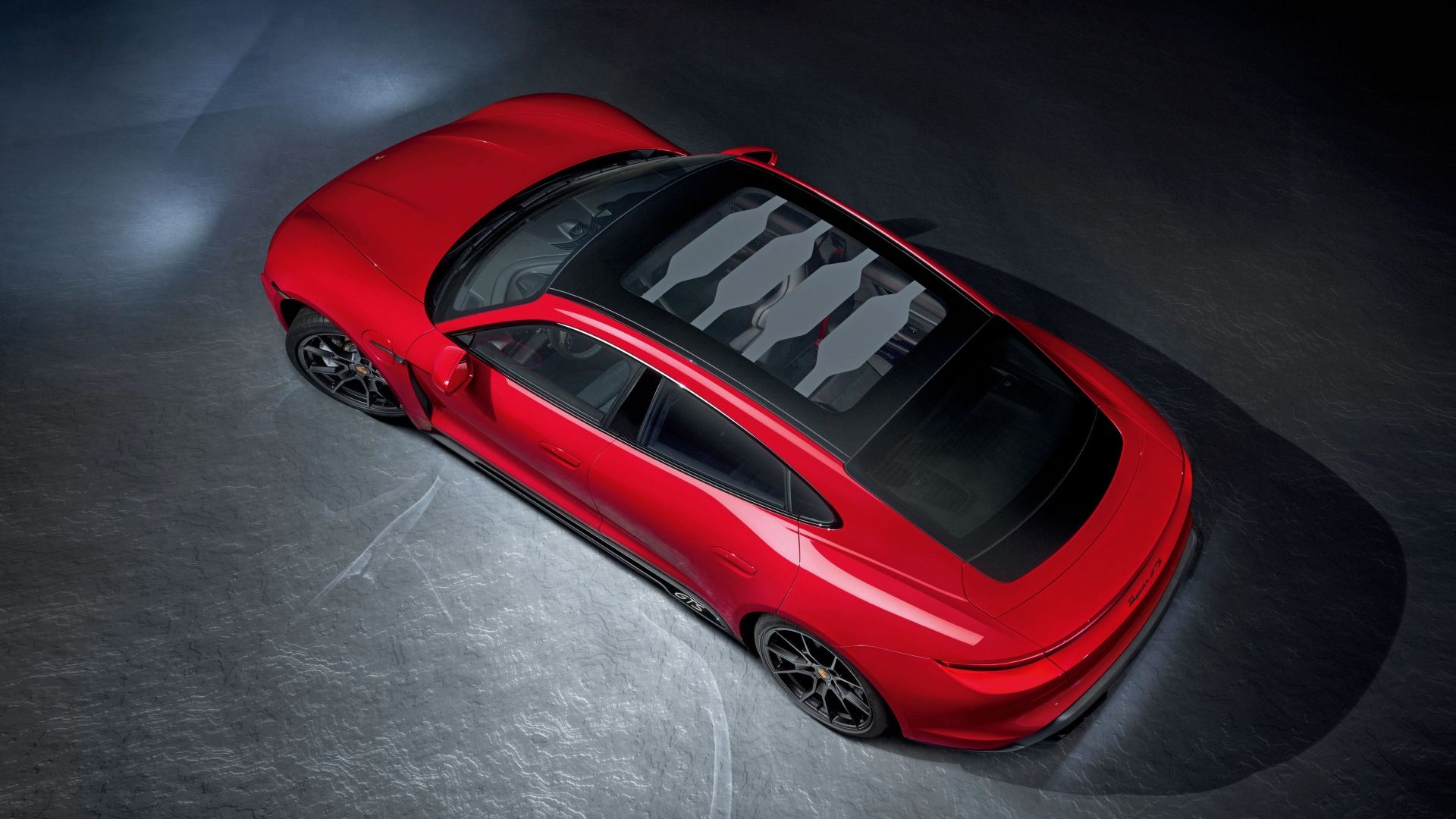Porsche has been investigating the use of holograms for years now, although the automaker’s latest research suggests taking the technology in a wild new direction. As reported by CarMoses, the company has filed two separate patents, one of which will describes smart glass for the car’s dashboard, windows, and panoramic sunroof to provide both immersive entertainment for passengers and logical information for drivers. The other will be holographic displays on the car’s body panels themselves, for example a range indicator projected from the car’s charging port. That could mean a future Taycan will be able to communicate to its owner entirely in hologram form.
Virtual Reality In The Real World
One of the filings at the German Patent and Trademark Office is for exterior panels that hide pinprick-size light diodes, which would emit tiny beams of light above the surface of the body to create a hologram. The patent describes one such use in which the holographic image, projected from the electric charge port door, would give the owner information about the car’s state of charge and range. Other applications of the technology would include displaying errors or relaying owner messages. The holograms could even project a virtual walkway on the ground for safer vehicle access at night.
However, Porsche seems to have made the displays interactive. Using motion detection technology, the holograms could interpret driver gestures and take action appropriately: opening or closing the charge door, for example, or lowering the windows on a hot day. But as sophisticated and interesting as the technology sounds, we’re not sure it would be more intuitive or effective than existing means of interacting with a vehicle, particularly as customers demand more physical controls and fewer virtual ones.

Related
Hyundai Is Fixing The Most Annoying Thing About Its Cars
Americans have spoken: Bring back buttons and knobs.
Infotainment Tech To Give BMW A Run For Its Money
The other patent might take greater hold, however. It describes smart glass, specifically for the panoramic sunroof, although it could theoretically be used anywhere Porsche uses regular glass. The smart glass uses a thin color film (not unlike Porsche’s “E-ink” patent) on its surface, which changes in opacity when an electrical current is applied. The automaker already offers an electrochromic glass roof on the Taycan, but the tech described in the patent improves on what’s currently available by selectively blocking specific wavelengths. That means your roof (or other smart glass panels) could become an information display, visible either from the interior or exterior of the car. It’s not the first time we’ve heard about interactive glass; Continental unveiled projection technology at CES 2025, but Porsche’s patent uses electrochromics instead.
It could also be used for entertainment and design purposes. For example, smart glass on the panoramic roof could display lighting sequences and colors that correspond with the beat of the audio system, and it could even be used to display video on a giant canvas (presumably when parked). We can’t imagine many more interesting places to stream The Last of Us or Jurassic Park than a Taycan at a charging station, with its center screen playing the video and the glass roof providing additional ambiance. Heck, the color film could even be applied to the inside of the windshield, making the whole car an immersive screen. BMW’s 31-inch rear seat theater screen could never.
Source: CarMoses
#Future #Porsche #EVs #Feature #Holographic #Displays #Bodywork



